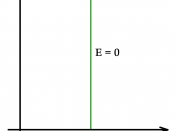StrategyPrice DiscriminationIntroductionPrice discrimination is a practice where a firm sells the same product to different customers at different prices (McDowell M. and Thom R. 2001: p.258). The rationale behind price discrimination is to increase revenue and profits.
In order to discriminate the customers by price a firm should meet three conditionsâ¢The firm should be able to set its price in market.
â¢Consumers in low-priced market should not be able to resell the products in high priced market.
â¢Demand elasticity must be variable (Sloman, J. 2001: p.303).
There are three types of Price discriminationFirst degree Price discrimination (Perfect price discrimination)In this type of Price discrimination different prices are charged to different customers and different prices are charged for different units of products sold to same customer. The maximum price that the buyer is willing to pay at a particular point of time is called reservation price (Dobson, S.1998:p.176). The perfect monopolist charges reservation price for the units he sells under first degree price discrimination.
Analysis of First-Degree Price DiscriminationIn first-degree price discrimination since the monopolist charges reservtion price for each unit he sells the reservation MR curve becomes the demand curve .The eqilibrium output is the point of intersection of demand curve and MC curve. The output the monopolist produces is OC .The area OABC gives the total revenue. On subtraction of costs which is the area below the orange area in the figure form total revenue gives the total profit which is shown by the orange area in the figure above since the monopolist charges the highest price for the product at the particular point of time.
This type of price discrimination has two benefitsâ¢It helps the seller to understand the consumer surplusâ¢It helps the producer to produce quantity according to the demand which would improve the stock turnover...


